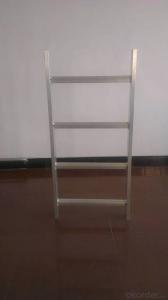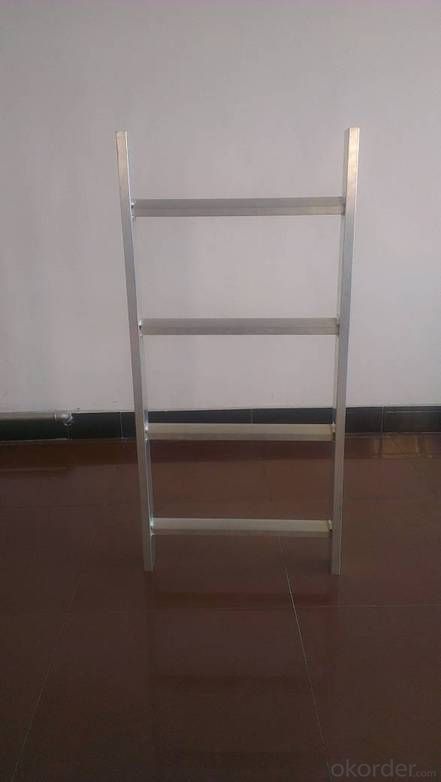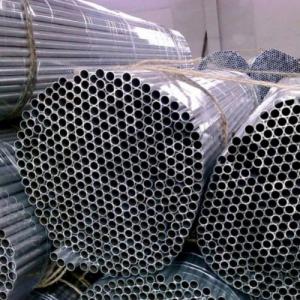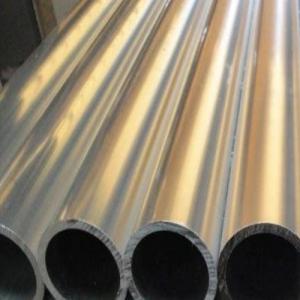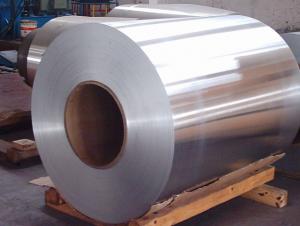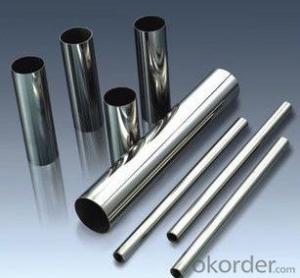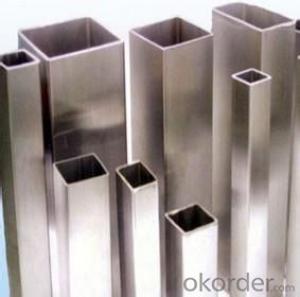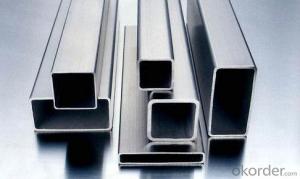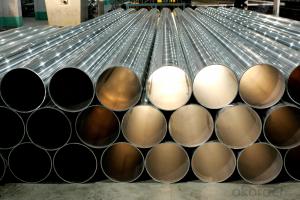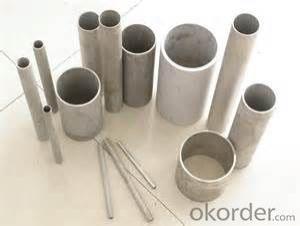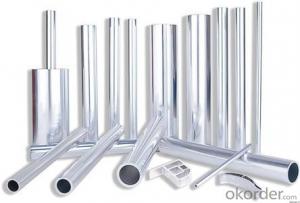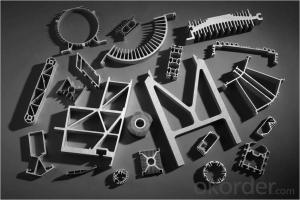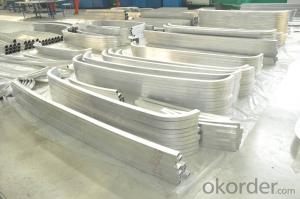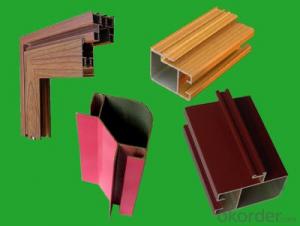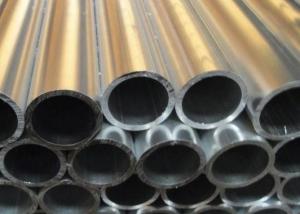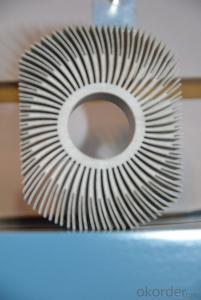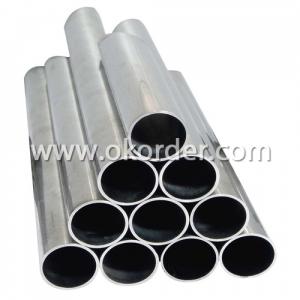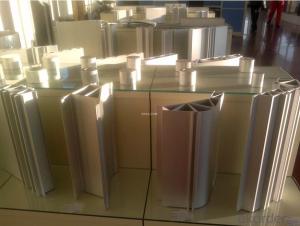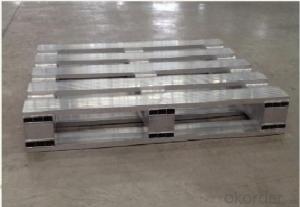Aluminum Ladder and Pipes
OKorder Service Pledge
OKorder Financial Service
You Might Also Like
We are the largest aluminum profilemanufacture in
Material | Alloy Aluminum 6063,6061,6005,6082 or customer nominated |
Temper | T3, T4, T5, T6 and other |
Surface | Anodize, electrophoresis, powder coating, PVDF coating, etc. |
Colour | Any colour based on Standard Germany RAL Mark |
Length | Not more than 16 meters |
Good Package | Inner plastic film /outside carton/wooden pallets |
Payment Method | T/T, L/C, etc |
Delivery Time | Normally 2-4 weeks, Delivery time can be consulted. |
Press Machine | 500-12500 tons all together 93 press lines. |
Fabrication | 1. Furniture 2. Drilling; 3. Bending; 4. Cutting; 5. etc. |
Certificate | ISO/TS 16949,DNV,IRIS,CCS,AFA,etc. |
Dies | 1. Using our dies, no fee; |
2. Using customer drawing, opening dies, usually about 5~50 tons then the dies cost can be refunded. | |
3. Die cost is negotiable base on the order quantity | |
Capability | Annual output 800,000 tons |
- Q: Which tubs are heated by aluminium tubes? The plastic feels unsafe
- Plastic pipe heating at high temperature, it is prone to explosion, security is not high. Have you heard it is not SOFO Soffer, aluminum heating, very good security.
- Q: Are aluminum pipes compatible with different fittings and connectors?
- Aluminum pipes usually work well with a variety of fittings and connectors. Thanks to its versatility, aluminum can be easily manipulated through machining, welding, or threading to accommodate different types of fittings and connectors. This makes it convenient to join aluminum pipes with other components or systems, including valves, hoses, or other piping materials. Moreover, aluminum boasts outstanding resistance to corrosion, making it even more compatible with various fittings and connectors. It can endure exposure to different fluids or environments without deteriorating or reacting negatively. Nevertheless, it is crucial to use fittings and connectors specifically designed for aluminum pipes to guarantee a secure and leak-free connection.
- Q: Is the tube of LED lamp all plastic tube well or half plastic half aluminium tube?
- Of course, the power is placed inside the aluminum tube, so that the amount of LED heating plus the heating capacity of the power supply is considerable, because the power of this lamp is usually around 20W. If the power is bigger, half of the aluminum tube can not solve its heat dissipation problem. It also proposed another aluminum tube cooling fan: shaped tubes. The fan shaped aluminum frame with heat dissipation structure shape, greatly increasing the radiator area. It puts the power outside the tube so that the half of the aluminum shell is completely made into a radiator. Relative to the semicircular aluminum tube, its heat dissipation area has increased by more than 3 times. Coupled with the power does not put in the tube, but also to reduce heat, which greatly extended the life of LED.
- Q: How can the aluminium tube cooler be welded?
- Car water tank comprises a vertical tube and the root, and tank truck riser for Q303 welding with WE53 special porous gun welding, the truck tank root and intercooler with WE53 welding wire with oxygen acetylene welding or cutting gun.
- Q: What is an aluminum pipe?
- Made primarily from aluminum, which is a lightweight and corrosion-resistant metal, an aluminum pipe is a cylindrical hollow tube. It has advantageous properties that make it commonly used in various industries and applications. The durability, high strength-to-weight ratio, and excellent conductivity of aluminum pipes are well-known. They are frequently employed in plumbing systems, HVAC systems, irrigation, and transportation of fluids or gases. Moreover, aluminum pipes are extensively used in structural applications like scaffolding, handrails, and support structures, taking advantage of their lightweight nature. In summary, aluminum pipes are versatile, reliable, and widely utilized across numerous industries.
- Q: How do aluminum pipes compare to plastic pipes in terms of durability?
- Aluminum pipes generally offer higher durability compared to plastic pipes. Aluminum is a stronger and more rigid material, making it less prone to cracking, warping, or breaking under pressure or extreme temperatures. Additionally, aluminum pipes have a longer lifespan and are less susceptible to degradation from UV exposure or chemical reactions. However, plastic pipes may be more resistant to corrosion and are often cheaper and easier to install. The choice between aluminum and plastic pipes ultimately depends on the specific application and desired durability requirements.
- Q: Are aluminum pipes resistant to impact damage?
- Yes, aluminum pipes are generally resistant to impact damage due to their high strength-to-weight ratio and inherent durability. However, the extent of resistance may vary depending on factors such as pipe thickness, alloy composition, and the force of impact.
- Q: How to weld the refrigerator aluminum tube?
- Flame welding of aluminium tube for refrigerator1, if the operation of basic skills more solid, with 4047 of aluminum silicon welding wire with 201 of welding powder welding, this melting point is high, suitable for master use2, if it is a surname novice, with copper and aluminum wire using low melting point welding, welding can refer to special "video - how ALCU-Q303 welding of copper aluminum pipe joint"
- Q: Are aluminum pipes suitable for outdoor applications?
- Yes, aluminum pipes are suitable for outdoor applications. Aluminum is highly resistant to corrosion, making it a durable option for outdoor use. It also has a high strength-to-weight ratio, making it easy to handle and transport for various outdoor projects. Additionally, aluminum pipes can withstand extreme weather conditions and temperature changes, further enhancing their suitability for outdoor applications.
- Q: Why are copper tubes used in household air conditioners and aluminium tubes for automotive air conditioners?
- The difference between air conditioning copper tube and aluminum tube:1 、 the material of copper tube and aluminum pipe is different.2, the copper pipe and aluminum pipe flow is different.3, copper and aluminum prices are different: Copper costs high.4, the application of copper and aluminum, brass, good ductility, resistance to oxidation, bellbottom do good pressure resistance, not easy leakage of refrigerant, are often used in air conditioning; aluminum can do bell, pressure difference of oxidation resistance, it is prone to leak, if not good insulation cotton, it is a hidden danger.5, copper and aluminum bending: aluminum tube bending, better than copper bending resistance.
Send your message to us
Aluminum Ladder and Pipes
OKorder Service Pledge
OKorder Financial Service
Similar products
Hot products
Hot Searches
Related keywords
